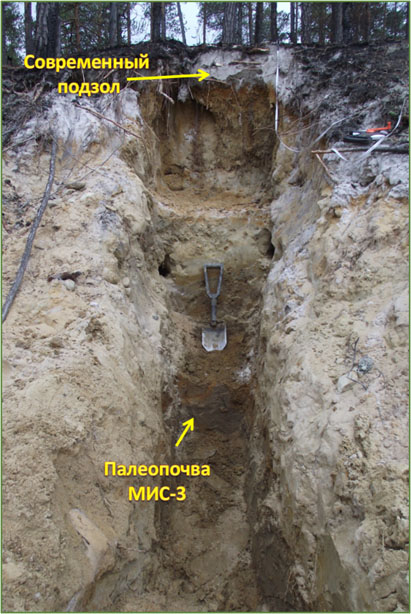Криогидроморфные палеопочвы севера Западной Сибири как индикаторы тёплых стадий позднего плейстоцена и их связь с ходом криогенеза
DOI:
https://doi.org/10.31251/pos.v6i3.236Ключевые слова:
палеопочвы; криогидроморфный педогенез; север Западной Сибири; плейстоцен.Аннотация
Цель исследования. Установить и обосновать закономерности развития палеопочв севера Западной Сибири, выявить почвенные уровни, связанные с потеплениями климата во время морских изотопных стадий (МИС), а именно МИС-5, МИС-3 и в конце МИС-2.
Место и время проведения. Исследования проводили в течение последних 10 лет на репрезентативной территории между полярным кругом и широтным течением Средней Оби. Проведены палеопедологические и палеокриологические исследования с полевыми работами в бассейне р. Вах (правый приток Оби), р. Таз и р. Надым, где изучены разрезы с позднеплейстоценовыми палеопочвами.
Методы. Основной методологией являлось детальное исследование плейстоценовых палеопочв на базе изучения взаимодействия процессов палеокриогенеза и криопедогенеза. Обнаруженные палеопочвы были сопоставлены с поверхностными голоценовыми почвенными профилями, что является важным элементом анализа палеопедологических летописей. Для возрастной диагностики палеопочв применяли 14С-датирование содержащихся в них органических остатков и гумусового вещества, а также U/Th-датирование по материалу палеопочв.
Основные результаты. Выявлено несколько палеопочвенных уровней: у почвы начальной подстадии МИС-5 (МИС-5е) были признаки лесного педогенеза, развивавшегося вне криолитозоны; у почв, завершающих подстадий МИС-5 и почвы МИС-3 – черты оглеения и участия криогенеза; почва конца МИС-2 лучше представлена оглеенными педоседиментами в псевдоморфозах по полигонально-жильным льдам. Изученные почвы указывают на мерзлотный характер почвообразующих осадков во все фазы позднего плейстоцена, кроме МИС-5е, что важно при оценке окружающей среды. В работе приведены данные о широком распространении в рассматриваемом регионе полигонально-жильных структур, представленных псевдоморфозами по эпигенетическим полигонально-жильным льдам, которые образовывались в самые холодные фазы МИС-4 и МИС-2. Псевдоморфозы образовались еще в условиях существования криолитозоны, имели синкриогенное развитие и были тесно связаны с формированием криогидроморфных палеопочв. Кроме того, по всей толще отложений МИС-3 характерны изначально-грунтовые жилы, также фиксирующие синкриогенное развитие этой толщи, но в условиях промерзания горных пород меньшей силы, чем в МИС-2. Тем не менее, в конце МИС-3, в верхних слоях ее толщи, тоже появляются криогидроморфные палеопочвы, фиксирующие приближение холодного времени МИС-2. Показано, что в заполнениях псевдоморфоз по полигонально-жильному льду хорошо сохраняется переотложенный материал криогидроморфных палеопочв, включая фрагменты гумусовых горизонтов. Продемонстрировано, что материал из таких переотложенных педоседиментов может быть использован для инструментального 14C- и U/Th-датирования и при отборе проб в палеоботанических исследованиях.
Заключение. Совокупность полученных данных отвергает гипотезу о формировании на исследованной территории в холодные эпохи плейстоцена холодных пустынь и ледниковых щитов и, соответственно, об образовании только климаэкстремальных почв. Показано существование на севере Западной Сибири в холодные эпохи плейстоцена развитого растительного и почвенного покрова при достаточном и местами избыточном увлажнении почв из-за близкого залегания кровли многолетней мерзлоты. Взаимодействия процессов палеопедогенеза и палеокриогенеза оставляет весьма информативные реликты, а их изучение позволяет получать высоко представительные данные о специфике почвообразования в прошлом.
Скачивания

Загрузки
Опубликован
Как цитировать
Выпуск
Раздел
Лицензия
Copyright (c) 2023 Почвы и окружающая среда

Это произведение доступно по лицензии Creative Commons «Attribution» («Атрибуция») 4.0 Всемирная.






